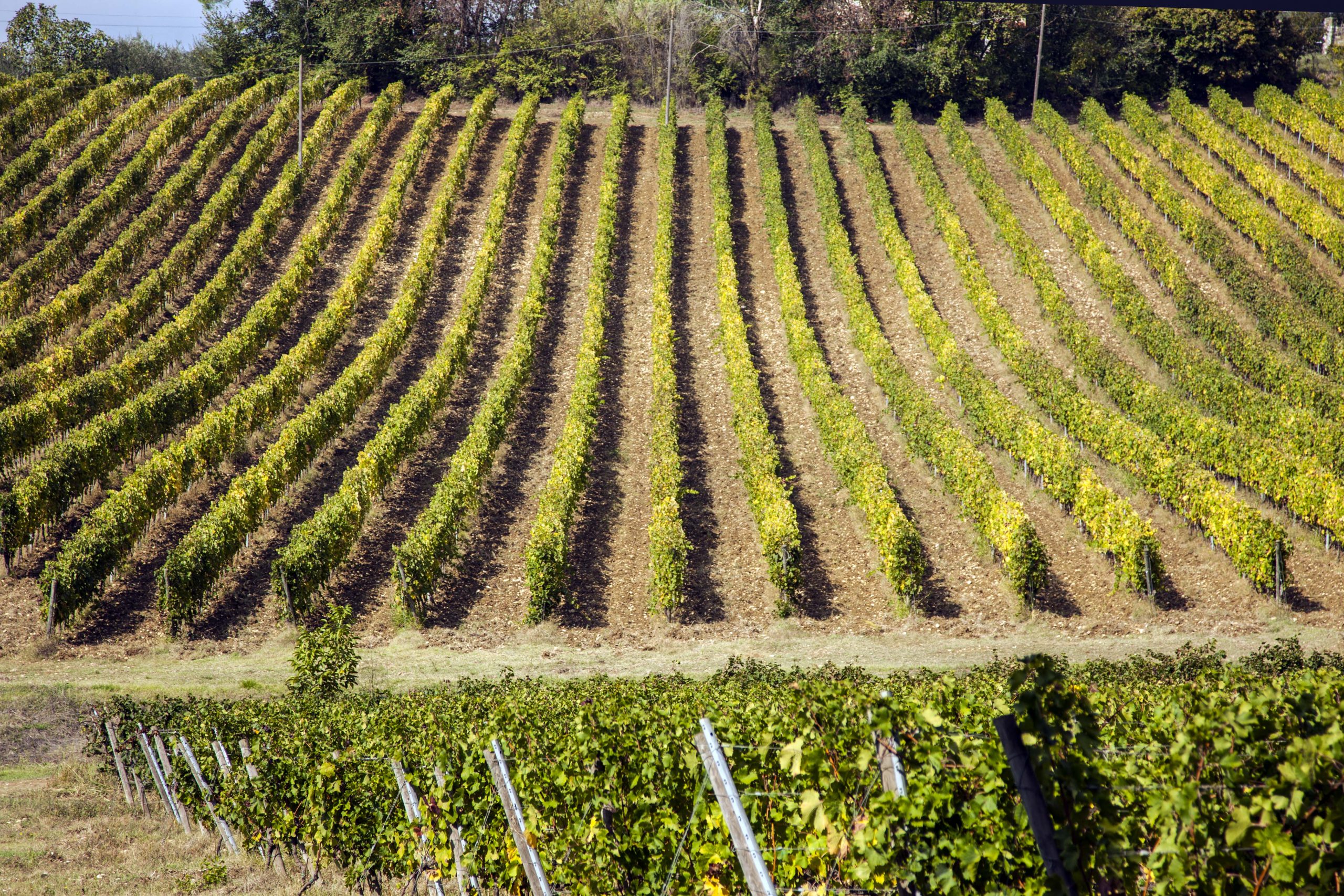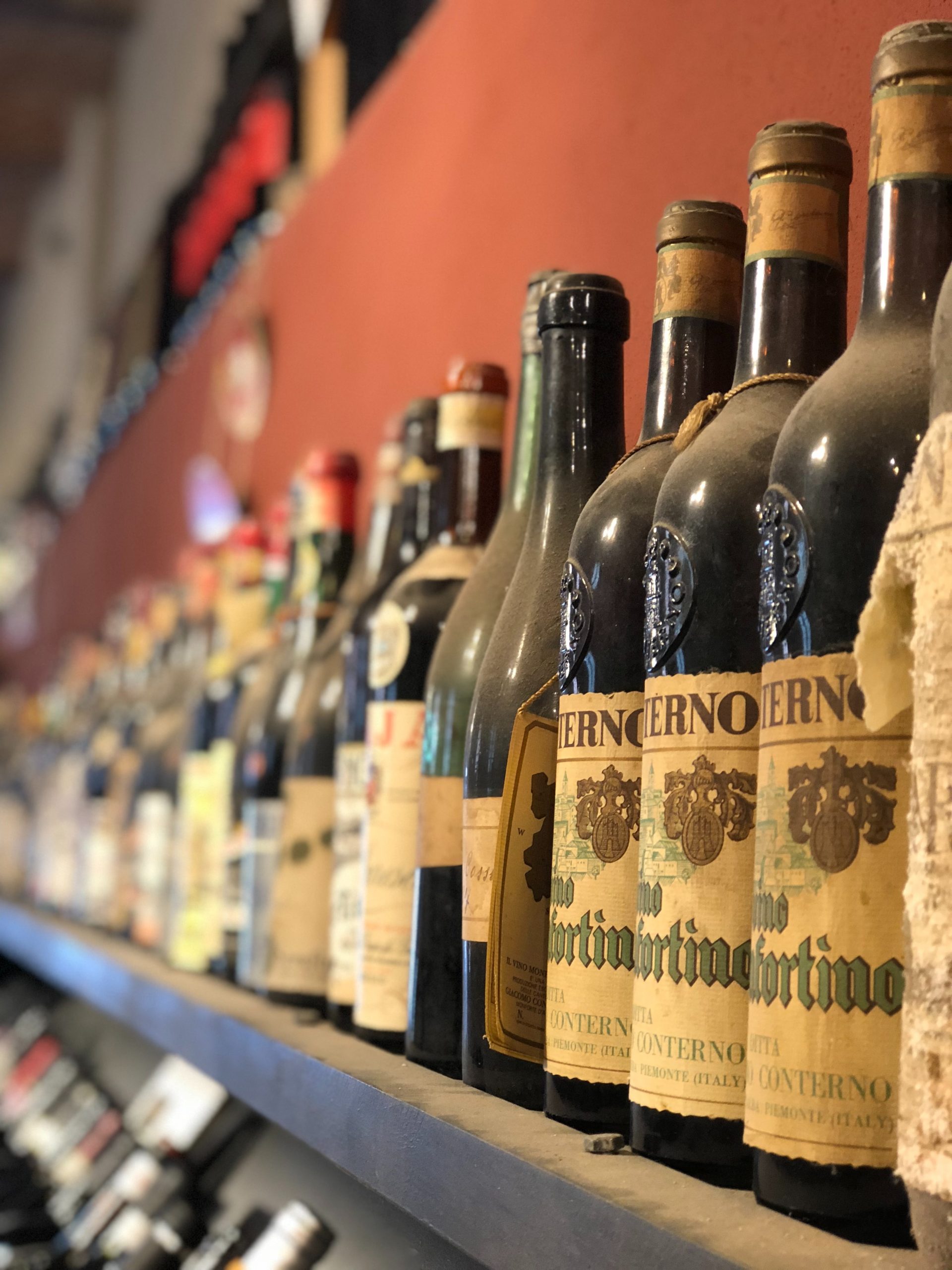Asti DOCG is Italy’s premier sweet sparkling wine from Piedmont, made from 100% Moscato Bianco grapes using the Charmat method. Established as DOCG in 1993, it produces semi-sweet, low-alcohol (7–9.5% ABV) wines with floral aromas and natural sweetness. Available worldwide for €7–30, it’s perfect for celebrations and desserts.
Table of Contents
What is Asti DOCG?
Asti DOCG is one of Italy’s most beloved sparkling wines, hailing from the rolling hills of Piedmont. Effervescent, fragrant, and irresistibly drinkable, this wine is made from 100% Moscato Bianco grapes using the Charmat method, producing a semi-sweet sparkling white that dances with notes of peach, orange blossom, and sage. Known historically as “Asti Spumante,” the appellation has evolved in style and reputation, offering both festive charm and serious craftsmanship.
Whether you’re toasting a celebration or enjoying it with dessert on a warm summer evening, Asti DOCG captures the joy and perfume of Italy in a glass.
History and Origins
The story of Asti is deeply entwined with Piedmont’s winemaking heritage. Moscato grapes have been cultivated in the region since Roman times, prized for their aromatic qualities. The development of modern sparkling Asti began in the 19th century when scientists like Carlo Gancia, inspired by Champagne, experimented with secondary fermentation.
By the 20th century, Asti Spumante had become a global symbol of Italian celebration. In 1993, the wine was elevated from DOC to DOCG (Denominazione di Origine Controllata e Garantita) status—Italy’s highest classification, recognizing its quality and origin. Today, the term “Asti DOCG” is used instead of “Asti Spumante” to reflect a modern, higher-quality approach.
Where It’s Made: Geography & Terroir
Asti DOCG production is centered in southern Piedmont, in the provinces of Asti, Alessandria, and Cuneo. The appellation encompasses over 50 communes, with the core vineyards nestled in the Langhe-Roero and Monferrato hills—a UNESCO World Heritage zone.
The terrain is a picturesque mix of steep vineyards and sun-drenched slopes. Limestone-rich soils, a temperate continental climate, and diurnal temperature shifts help retain the grape’s acidity while enhancing aromatics.
The Grape: Moscato Bianco
Asti DOCG must be made from 100% Moscato Bianco (Muscat Blanc à Petits Grains)—a grape famed for its intoxicating floral and fruity aromas. Moscato is one of the oldest known grape varieties in the world and thrives in the microclimates of Piedmont.
Its naturally high sugar levels and expressive character make it ideal for producing fresh, low-alcohol sparkling wines with lively aromatics.
Understanding the Charmat Method
The Charmat method, where secondary fermentation occurs in pressurized tanks, preserves the grape’s natural aromatics. Moscato Bianco contributes vibrant notes of elderflower, peach, orange blossom, and honey—crafted into a wine that’s joyful, effervescent, and easy to love.
Winemaking & DOCG Regulations
Asti DOCG wines are made using the Charmat or tank method, where secondary fermentation occurs in pressurized stainless-steel tanks. This method captures Moscato’s delicate fragrance and effervescence.
Key DOCG rules include:
- 100% Moscato Bianco grapes
- Minimum alcohol: 7% ABV (up to 9.5%)
- Charmat method only (no traditional method allowed)
- No dosage—natural grape sweetness only
- Fermentation stopped early to retain residual sugar
This results in a naturally sweet, aromatic, and low-alcohol sparkling wine.
Key Facts at a Glance
- Region: Piedmont (Asti, Alessandria, Cuneo)
- Grape: 100% Moscato Bianco
- DOCG status: Since 1993
- Style: Semi-sweet sparkling white
- Alcohol level: 7–9.5% ABV
- Method: Charmat (tank method)
- Price range: €7–€30+
Asti DOCG Tasting Notes: Floral, Fresh, and Festive
Expect a pale straw hue, fine persistent bubbles, and aromas of orange blossom, ripe pear, and sweet citrus. On the palate, Asti offers a delightful balance of natural sweetness, low alcohol, and fresh acidity—making it a perfect match for celebrations or relaxed aperitivo moments.
Perfect Food Pairings: From Desserts to Aperitivo
While it shines with desserts like fruit tarts, panna cotta, and biscotti, Asti DOCG also complements spicy Asian dishes, blue cheese, and savory aperitivo bites like prosciutto-wrapped melon. Its versatility makes it an essential bottle for creative pairings.
Ideal serving temperature: 6–8°C (43–46°F)
Best pairings:
- Classic: Panettone or Torta di Nocciola (Hazelnut Cake)
- Fruit tarts, peach cobbler, lemon sorbet
- Asian dishes with light spice (like Thai basil chicken)
- Soft cheeses like robiola or burrata
While often served with dessert, Asti DOCG’s balance makes it a surprising and delightful aperitivo.
Where to Buy Asti DOCG Worldwide (Pricing Guide)
Asti DOCG is widely distributed through:
- Online retailers (Vivino, Wine.com, Tannico)
- Local wine merchants in the U.S., U.K., and Asia
- Supermarkets across Europe
Pricing Guide:
- Under €10: Accessible celebration wines (e.g., Martini & Rossi)
- €10–20: Premium producers (e.g., Fontanafredda, Coppo)
- €20–30: Boutique, single-vineyard expressions
Asti DOCG vs. Prosecco vs. Moscato d’Asti: Key Differences
| Wine | Grape | Alcohol (%) | Sweetness | Bubbles | Method |
| Asti DOCG | Moscato Bianco | 7–9.5% | Semi-sweet | Fully sparkling | Charmat |
| Prosecco | Glera | 11–12% | Dry–Brut | Fully sparkling | Charmat |
| Moscato d’Asti | Moscato Bianco | ~5.5% | Sweet | Lightly sparkling | Partial fermentation |
Top 10 Asti Wine Producers to Know
- Martini & Rossi – Globally recognized and reliable.
- Fontanafredda – Historic Barolo estate with elegant Asti.
- Michele Chiarlo – Family-run, expressive styles.
- Coppo – Refined, artisanal producers since 1892.
- Gancia – Pioneers of Italian sparkling wine.
- Toso – Modern appeal with DOCG reliability.
- Vinchio-Vaglio Serra – Co-op with standout quality.
- Bosca – Accessible and consistent.
- Enrico Serafino – Boutique traditionalists.
- Emerging boutiques – Watch for new-generation winemakers exploring terroir-driven styles.
Asti DOCG Vintage Guide and Storage Tips
- Drink Young: Best within 1–2 years for maximum freshness.
- Storage: Keep bottles in a cool, dark place.
- New Releases: Typically available post-harvest (November–January).
Wine Tourism: Visiting Asti and the Moscato Hills
Explore Piedmont’s rolling hills through:
- UNESCO sites: Langhe-Roero-Monferrato
- Top wineries: Coppo, Fontanafredda, Michele Chiarlo
- Festival delle Sagre (September): Celebrate regional food and wine.
- Access: Easy day trips from Turin or Milan via train or car.The Sparkling
Sparkling Wine Hierarchy: Where Asti DOCG Fits
| Wine | Method | Price Range | Sweetness | Style |
| Champagne | Traditional | €40+ | Brut | Elegant, high acidity |
| Franciacorta | Traditional | €25–50 | Brut | Creamy, complex |
| Prosecco | Charmat | €8–20 | Brut–Extra Dry | Crisp, fruity |
| Asti DOCG | Charmat | €7–30 | Sweet | Aromatic, celebratory |
| Cava | Traditional | €10–20 | Brut | Nutty, mineral-driven |
Best Value Asti Wines by Price Point
- Under €10: Martini & Rossi, Bosca
- €10–20: Fontanafredda, Michele Chiarlo, Gancia
- €20–30: Coppo, boutique expressions from small producers
FAQ on Asti DOCG
Is Asti the same as Prosecco?
No. Asti DOCG is made from Moscato Bianco in Piedmont using the Charmat method, while Prosecco is made from Glera grapes in Veneto. Asti is typically sweeter and more aromatic.
What’s the difference between Asti and Moscato d’Asti?
Asti DOCG is fully sparkling (spumante) with 7–9.5% ABV. Moscato d’Asti is frizzante (lightly sparkling) and lower in alcohol (~5.5%), often more delicate.
Can I age Asti DOCG?
Generally, no. Asti is best consumed young—within 1–2 years of release—when its aromatics are freshest.
Fun Facts & Cultural Notes
Global Pop Culture: Asti was once one of the most exported Italian wines in the world—its sweet bubbles became synonymous with celebration from the 1960s to the 1990s.
UNESCO Roots: The Asti DOCG zone is part of the Langhe-Roero and Monferrato UNESCO heritage landscape, celebrated for centuries of viticulture.
Festival Flair: Every September, the town of Asti hosts the Festival delle Sagre, where local foods and wines (including Asti) take center stage.
Have fun to learn more about Italian Wines and Spirits! Explore also the non-alcoholic beverages 😉
Send us an email if you want to suggest edits, or if you are looking for more info, at
cheers@drinkitalian.com
If you are in the mood for a good book, you can try:
– The Modern History of Italian Wine by Walter Filipputti
– Hidden Gems of Italy: An Insider’s Secret Formula To Find Top-Class Italian Wines At Value Prices And Taste La Dolce Vita by Tony Margiotta
Additionally, you can discover the other wines from Piedmont.


